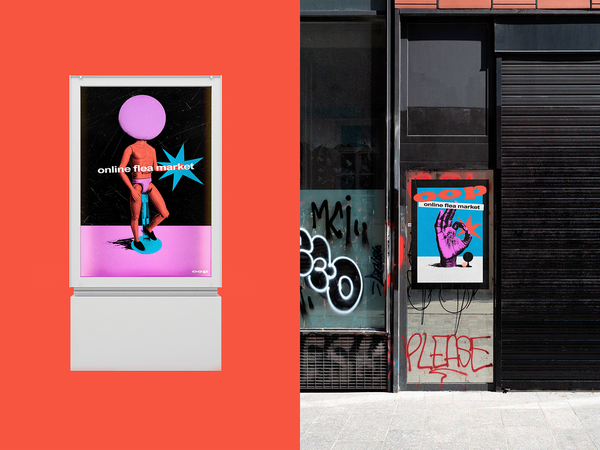According to the founder of the Lithuanian brand KISMAS, a single glass brick can be beautiful, and in fact: the former masonry elements, reborn as lamps, always show a different face thanks to the built-in light filters.
Lithuanian Ramunas Minkevicius took a truly adventurous path to found his own brand: he graduated as a researcher of religion from Vytautas Magnus University in 2008 and went on to study communications. He later gained experience as a marketing executive in various companies, but has always been passionate about design and architecture. His love of history classes and his interest in graphic design and advertising finally translated into a book: in 2015, he published his own book, which tells the story of Lithuanian advertising graphics between the two world wars.
The publication earned several awards and was the subject of an exhibition not only in Lithuania but also in Tokyo. Upon returning home, he became head of marketing at Lithuanian Airlines, where he worked for four years. The coronavirus did not spare him either: after getting laid off, he felt the time was right to start his own business. The idea of a glass brick transformed into a lamp had been on his mind for quite some time, and the KISMAS brand was born.
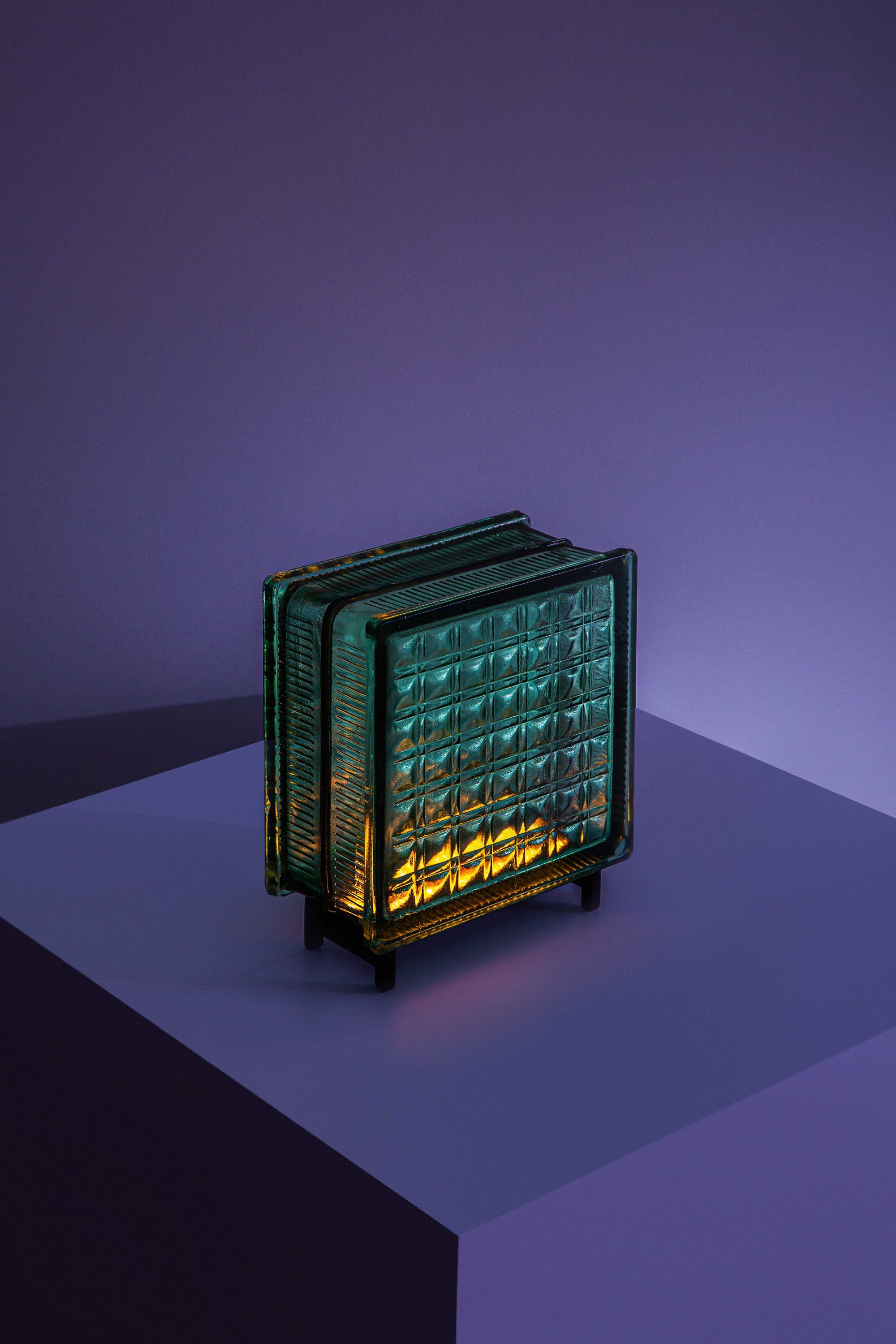
“It all started when I was lying in bed thinking how cool it would be to replace the walls of my bathroom with glass bricks.
Shortly afterwards, I started to look at this architectural element in a different way: the shape, proportions, scale, pattern of the glass brick is very sculptural—that’s why I loved it so much,” tells Ramunas.
He knew that in order to enhance these properties of the object, an extra element, light, was needed. The idea of making luminous glass bricks was something he told his friend Jurgis Garmus, founder of the Jot.Jot brand. Jurgis liked the idea and encouraged the somewhat unassured Ramunas to start his own business.
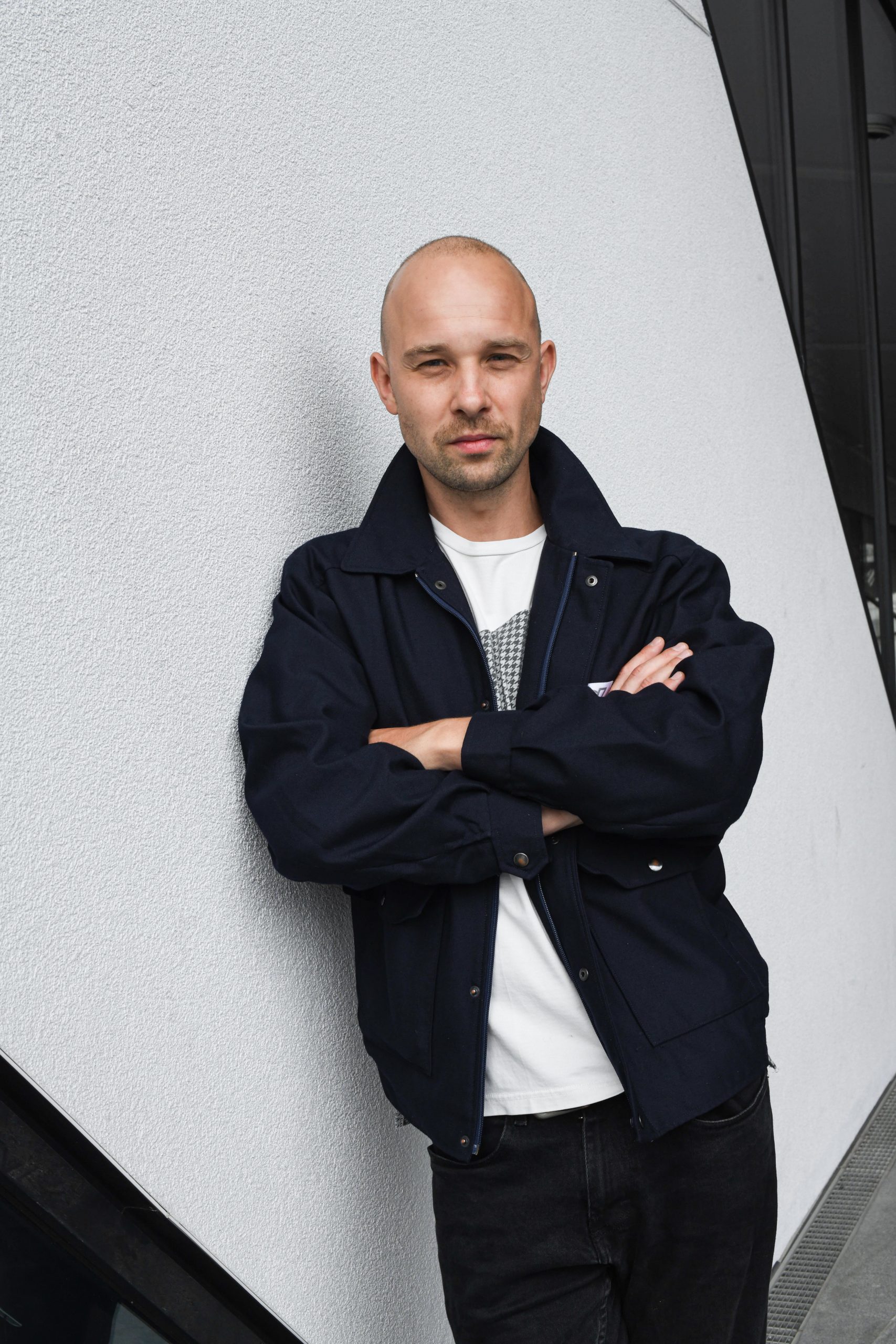
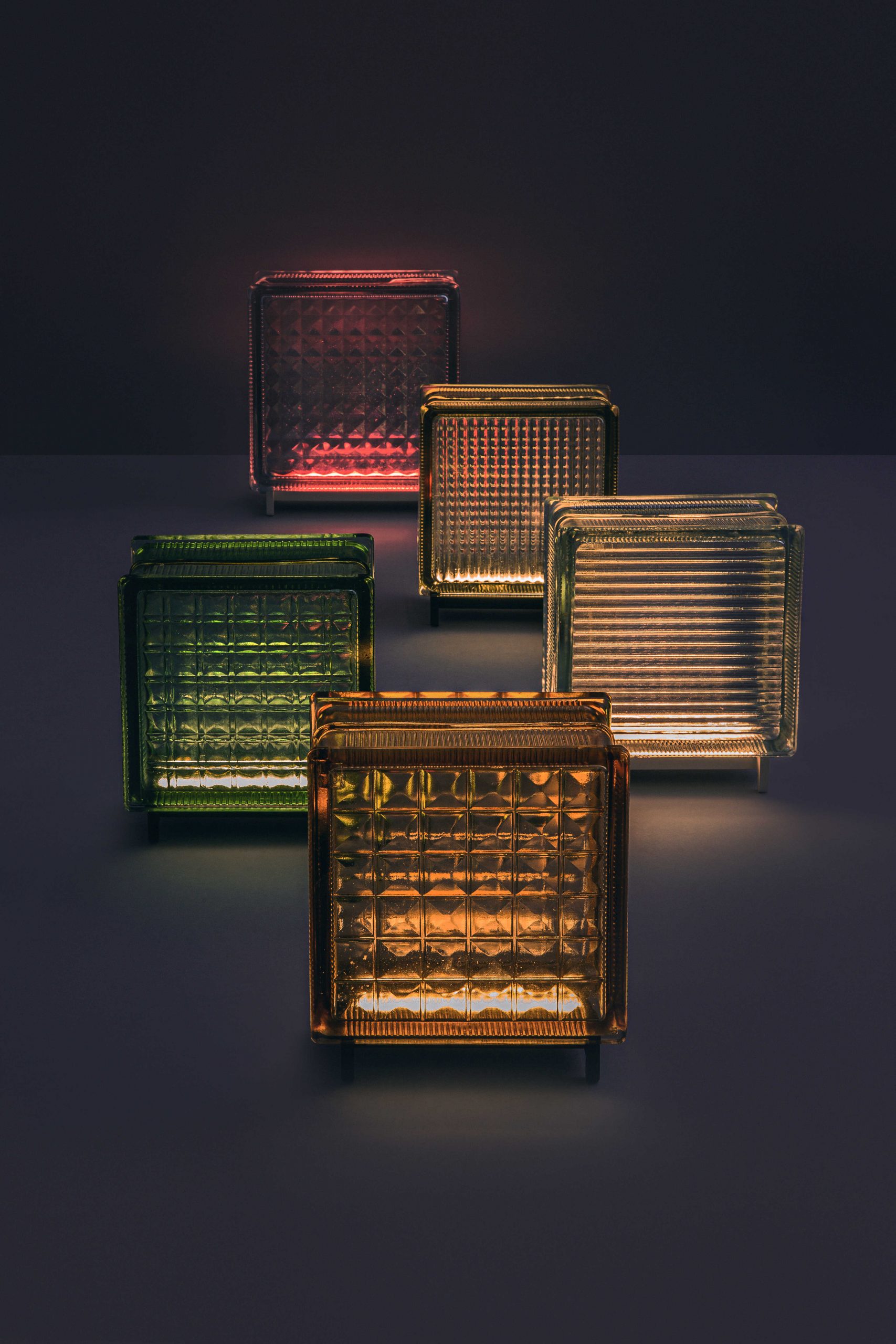
The brand name KISMAS also refers to change: this Lithuanian term is somewhat similar to the English “flux”, which means constant change. In the case of KISMAS lamps, the term is apt, since glass bricks were once an integral part of a building and, although they were then associated with natural and artificial light, they have only now been revived as home accessories.
Ramunas recalls that in the city of Kaunas, where he was growing up, he was surrounded by many modern buildings: in addition to the modern architectural heritage of the two world wars, there were many characterful buildings erected in the area during the cold war decades—the latter were characterized by the use of glass brick as a masonry element. “Here in Lithuania, architects used glass bricks in almost all school gymnasiums and factory buildings, as well as in the staircases of apartment buildings during the Soviet occupation. The reason is quite simple: glass brick retains heat well, while allowing enough light to pass through—a perfect solution for energy saving in the planned economy system,” says the brand’s founder.
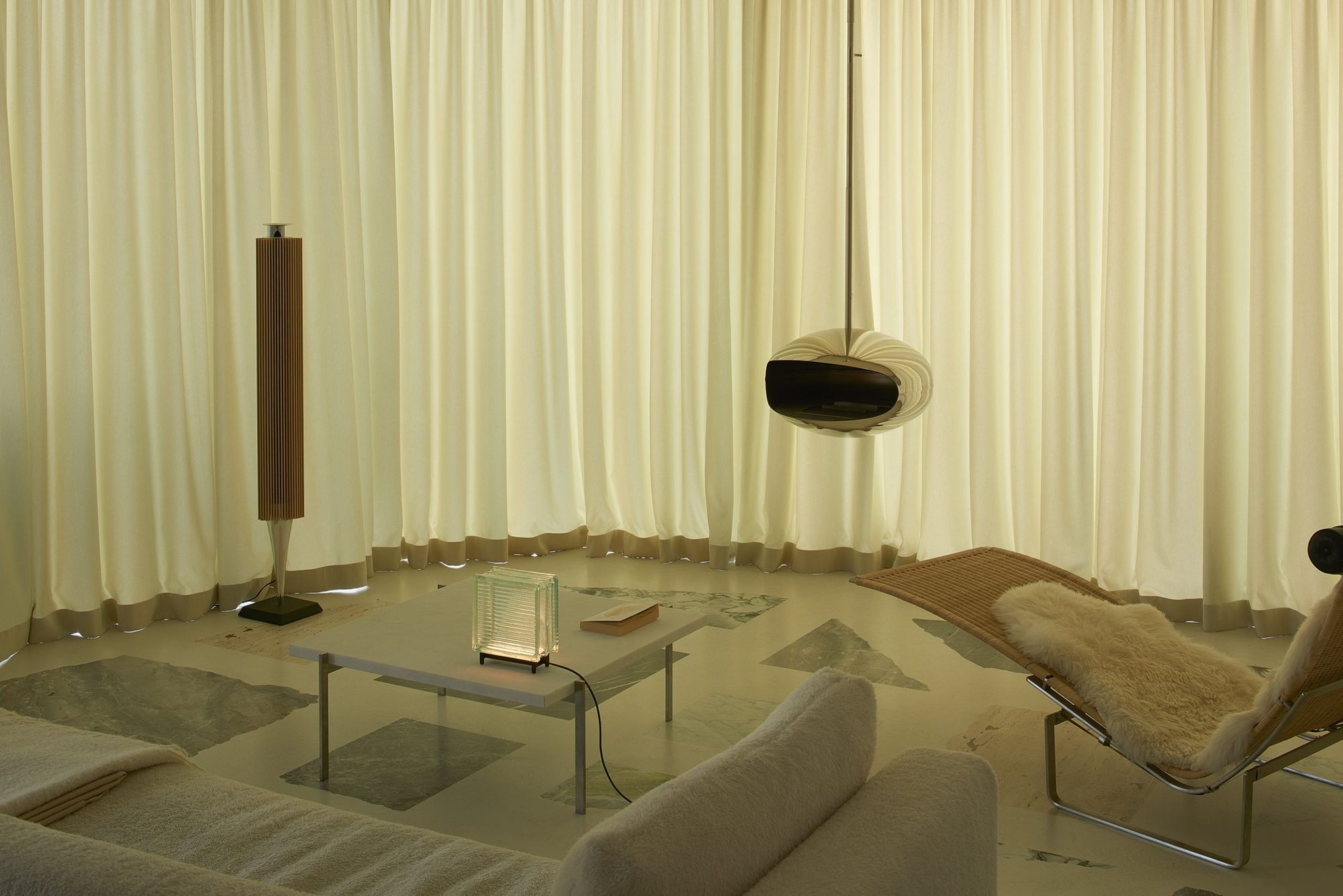
On the KISMAS Instagram page, you can also see archive footage of glass bricks on the facades or in the interior of Lithuanian buildings, such as the Vilnius Concerts and Sports Hall, which opened in 1971. But you can also find examples from abroad showing where and in what form glass bricks have been (and are still) used in architecture. “I am also sharing posts like this on the site because I want people to see the beauty in this material and discover its potential,” says Ramunas.
Thus, if you’re a devoted fan of modern architecture, the KISMAS lamps are likely to make your heart beat faster. Currently, there are five different types of lamp to choose from: each of the colorful “glass cubes” with their exciting textures can change color thanks to different light-effect filters. The “Tokyo Blue” filter, for example, conjures up the atmosphere of the film “Blade Runner” in your living room, while the “Primary Red” filter is designed for house parties and bars. For those who want cozy lighting in their bedroom, “Pale Rose” is the perfect choice.
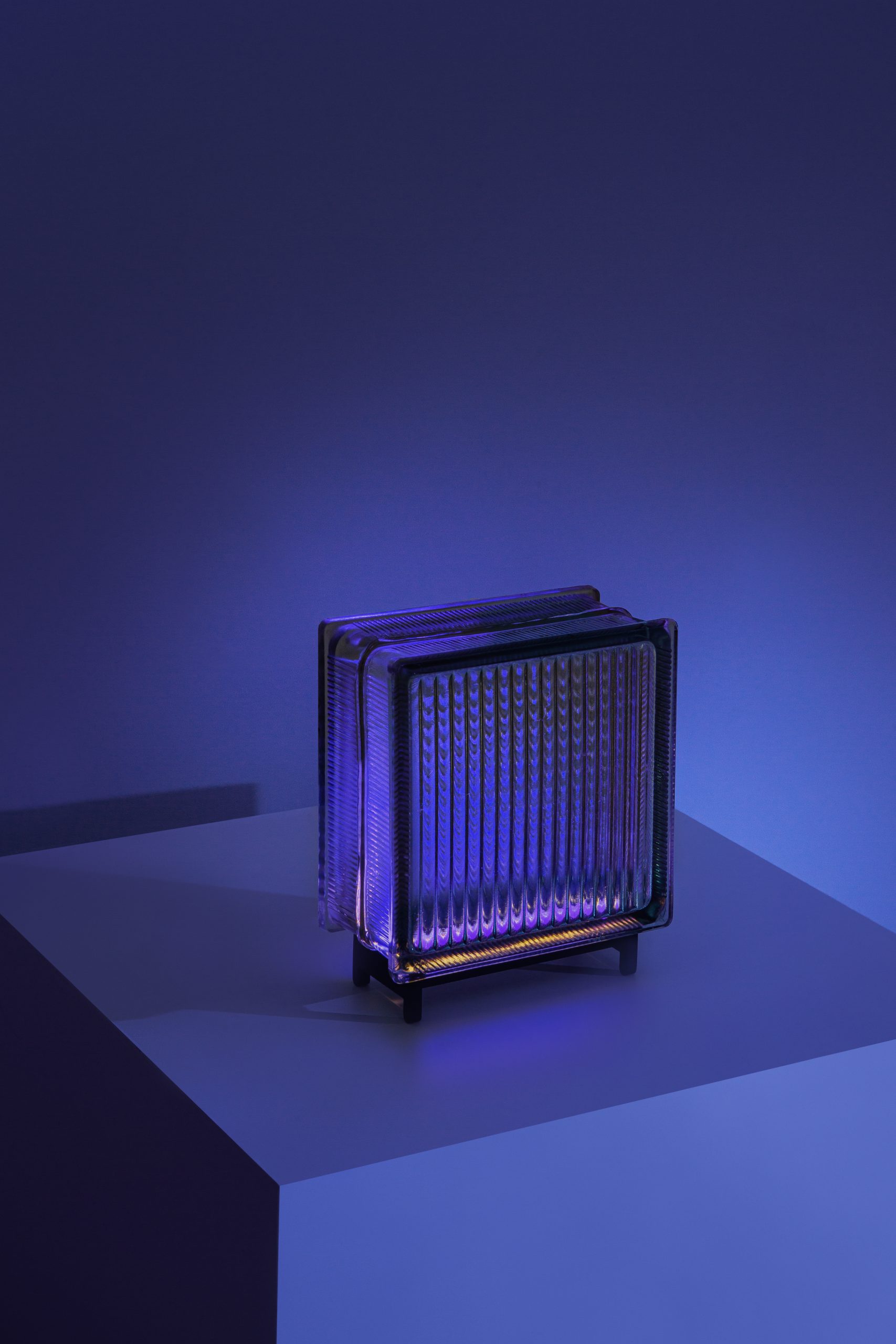
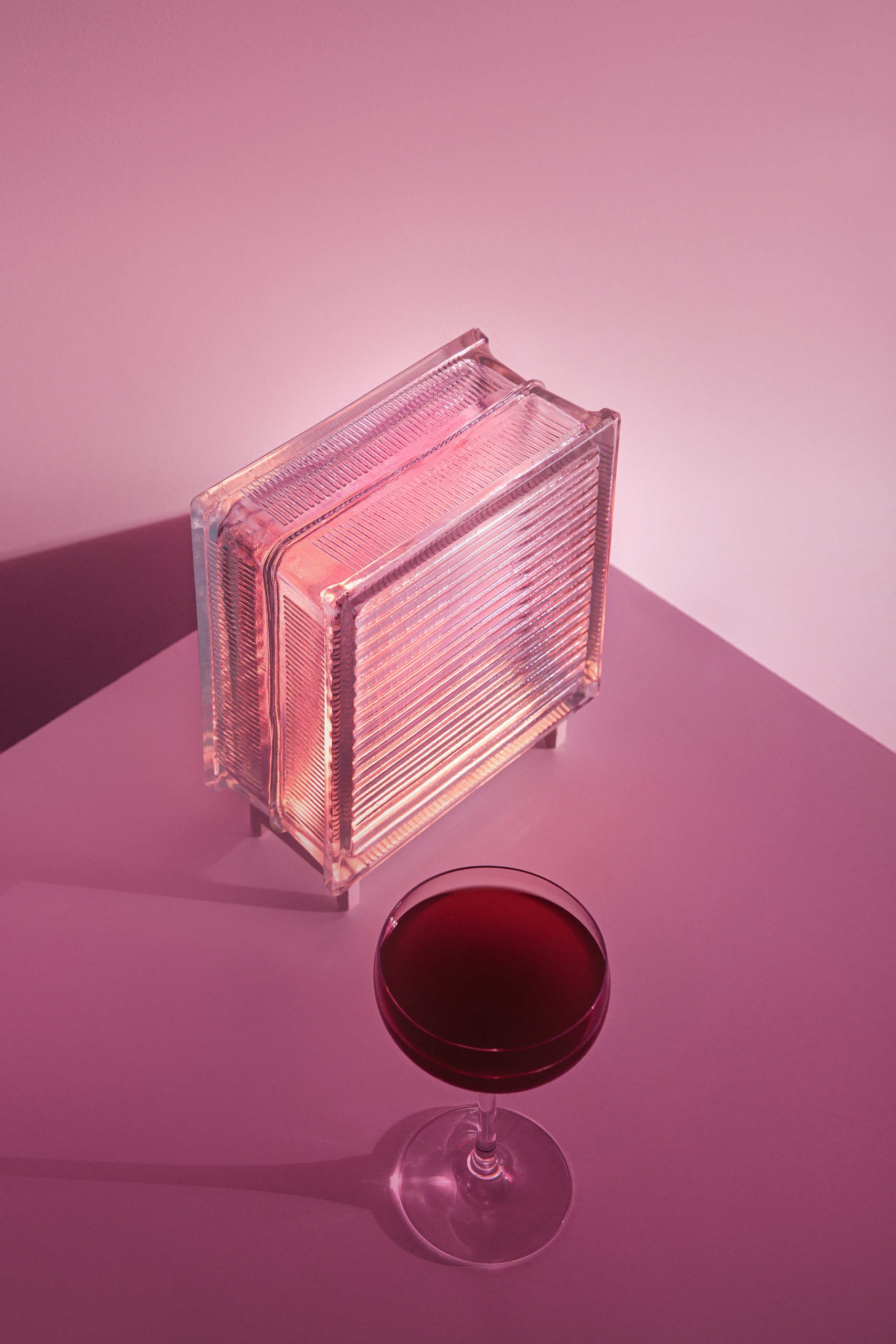
The KISMAS slogan, “recycled modernity”, as the brand’s website says, can be taken literally: the lamps are made of original glass bricks, which means they may have minor factory defects or scratches, but this only adds to the authenticity of the object.
The lamps come in different colors and cost €139 each.
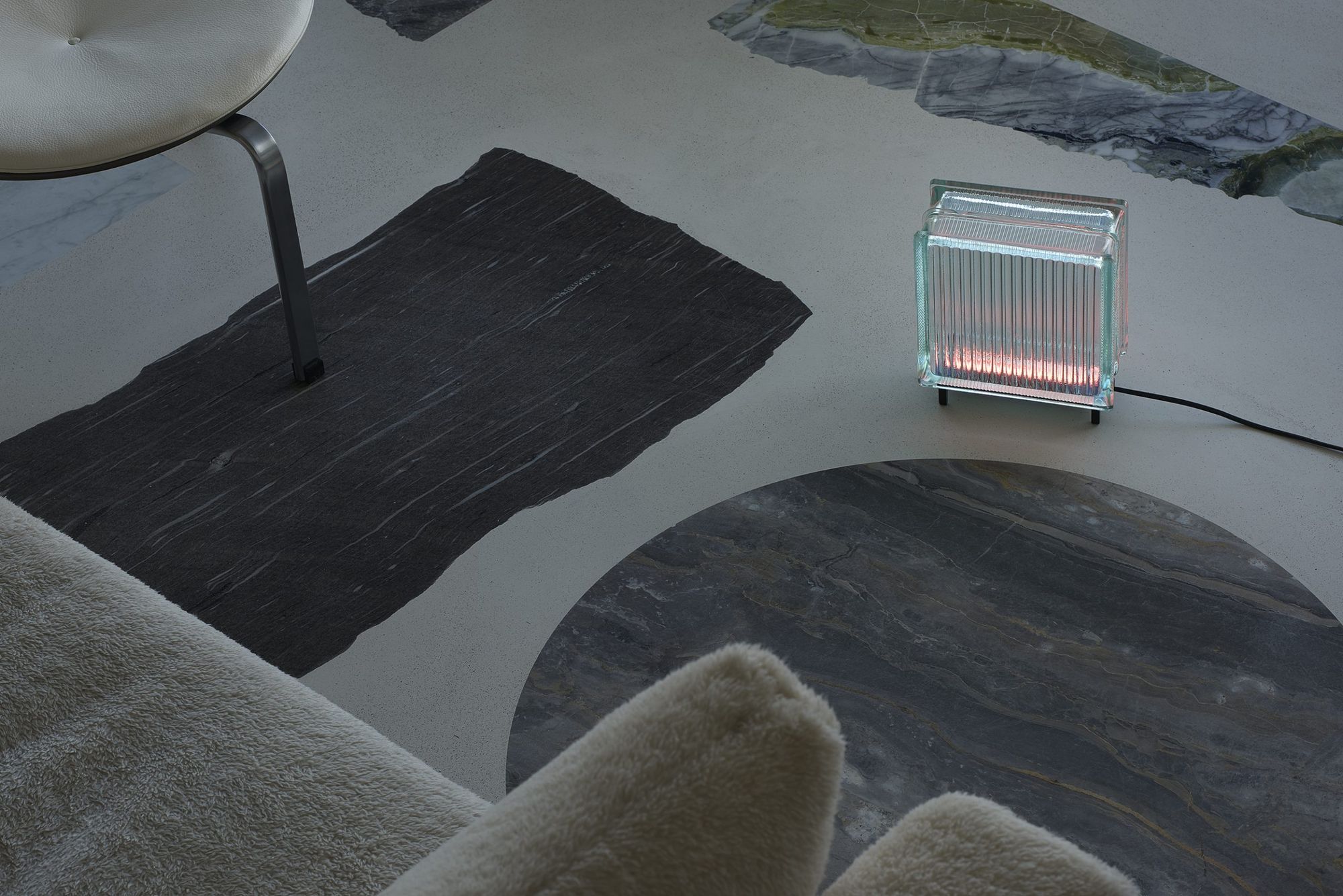
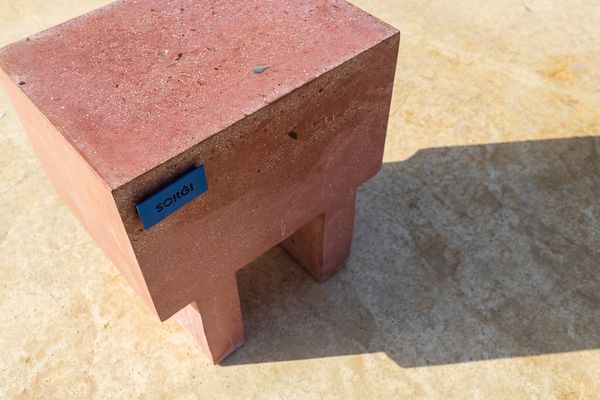
Street furniture made from construction debris

Tom Hanks' caravan is up for auction
